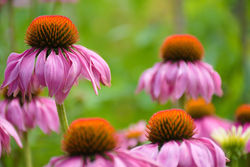How to know if your seeds are still good
- Lars Wildes

- Jan 10, 2023
- 4 min read
Updated: May 14, 2023
Have you ever opened the container where you store your seeds and thought, “Hmmm, are these any good?”
It happens to the best of us. Every year.
The good news is that you don’t have to spend money on new seeds just yet. With a few simple tests, you can determine if your seeds are still good.
In this article, we'll explore methods such as conducting a germination test, examining the physical appearance of the seeds, considering the storage conditions in which the seeds were kept, and more to determine if your seeds are still good and ready to be planted.

How to tell if seeds are still good
Before we dive into how to test your seeds, let’s look at some easy ways to quickly see if a seed is even worth testing.
How do the seeds look? Seeds that are still good should be firm and show no signs of shriveling or discoloration.
How were your seeds stored? Seeds that have been stored in a cool, dry place will generally remain viable for longer periods than seeds stored in a warm, damp environment. I store mine in dry, unused coffee filters. This keeps them safe for months.
How old are your seeds? The viability of seeds decreases over time, and older seeds may have a lower germination rate than fresh seeds.
*It's worth noting that there is no exact expiration date for seeds, and the viability of seeds can vary significantly… even within a single seed batch.
If you’re unsure about the age of your seeds, it’s always a good idea to test a sample of seeds before planting to ensure that they'll give you the fruit or flowers you’re after.
The 4 methods of seed testing
Every gardener has their favorite way to test seeds for germination potential. Here are a few of the ones that I use… and one that sounds way too complicated.
1. Germination test (Paper towel test)
This is the most common method of seed testing. It involves placing several seeds from a batch on a moist paper towel or cotton swab and giving them optimal conditions for germination (such as moisture, temperature, and light).
The percentage of seeds that germinate within a specific time frame lets you know if the seeds are worth planting out in your garden.

How I do it:
I test the germination ability of the seeds by sprinkling a few onto a well-moistened paper towel.
I then put them on a plate and cover them all with a plastic bag to keep the humidity at almost 100%. I don’t add heat because I do the test inside where it's room temperature.
After a few days, most seeds will begin to germinate.
If only a few seeds germinate, the seeds may be too old and I’m better off finding new ones.
When you count your sprouted seeds, it’s not necessary to have a 100% success rate. If I test 10 seeds and have 6 sprout… that’s a 60% success rate.
The higher the better, but anything above 50% is fine. Anything lower than half would indicate that you should replace the seeds.
If any of your seeds turn black during the paper towel test, chances are that they got too wet or too warm. Make sure your seeds have a little airflow and are kept out of direct sun to reduce the chances of rotting or growing mold.
2. Water test
If you’re in a hurry, you can always use the water test to test seed viability.
Take your seeds and place them in a container of water. Let them sit for around 15 minutes.
If the seeds sink, they’ll probably grow in your garden.
If they float, they probably will not sprout and you can toss them out.
Remember: Sink = grow. Float = throw.
3. Tetrazolium test
I’ll admit that I’ve never ever tried this. But it sounded interesting and perfect for any budding scientists out there.
This test involves staining the seed with a chemical called tetrazolium, which reacts with living tissue to produce a colored stain. The presence or absence of the stain can indicate whether the seed is alive or dead.
4. Pure seed test
Here’s another test if you’re in a hurry. It’s as simple as separating the seeds from other materials in the seed lot (such as chaff, broken seeds, and other contaminants) and identifying the pure seeds based on their physical characteristics, such as size, shape, and color.
While not as reliable as the other tests, if you’re in a pinch, it’s better than nothing.

What happens in seed germination?
Seed germination is when a seed begins to grow and develop into a seedling. It’s a complex process that involves the activation of the seed's metabolism and the growth of new cells and tissues.
A gardener that uses tetrazolium is probably better suited to explain this... but I’ll give it a shot.
During seed germination, the following events occur:
Water uptake: The seed absorbs water, which causes it to swell and triggers the process of germination. That’s why you have to keep your seeds damp, not drenched.
Metabolism activation: The seed's metabolism becomes active and the seed begins to produce energy and synthesize new compounds.
Mobilization of stored nutrients: The seed uses stored nutrients, such as carbohydrates and proteins, to fuel the process of germination.
Radicle emergence: The radicle, or embryonic root, emerges from the seed and begins to grow downward into the soil.
Shoot emergence: The shoot, or embryonic stem, emerges from the seed and begins to grow upward towards the surface.
Cotyledon expansion: The cotyledons, or seed leaves, emerge from the seed and begin to expand and photosynthesize, producing energy for the growing seedling.
Do you have a favorite way to test seeds? Share your ideas in the comments below.












Comments